Tetraplegia :
What is Tetraplegia?
Tetraplegia, also known as quadriplegia, is a type of paralysis that affects all four limbs and the torso. It occurs as a result of damage to the spinal cord, usually in the cervical vertebrae (the uppermost section of the spine).
People with tetraplegia typically have partial or complete paralysis of their arms, hands, trunk, legs, and pelvic organs. They may also experience respiratory problems and difficulty regulating their body temperature.
The severity of the condition can vary depending on the level of spinal cord injury. People with a higher injury (closer to the brain) may have more severe tetraplegia, affecting their ability to breathe, speak, and control their head and neck, while those with a lower injury may have more movement and sensation in their upper body.
Tetraplegia is a life-changing condition that can have a significant impact on a person’s daily life, including their ability to work, participate in recreational activities, and perform everyday tasks. Rehabilitation and assistive devices can help improve quality of life and increase independence for people with tetraplegia.
Related Anatomy
Tetraplegia is caused by damage to the spinal cord, which is a long, thin, tube-like structure that runs from the brainstem down to the lower back. The spinal cord is protected by the spinal column, which is made up of 33 vertebrae.
The spinal cord can be divided into different levels, based on the location of the injury. In tetraplegia, the injury occurs in the cervical vertebrae, which are located in the neck region. There are seven cervical vertebrae, numbered C1 to C7.
Each vertebra has a central opening called the spinal canal, which allows the spinal cord to pass through. The spinal cord is made up of nerve fibers that transmit signals between the brain and the rest of the body.
In tetraplegia, the nerve fibers in the spinal cord are damaged or severed, which can cause a loss of sensation and motor function in the limbs and trunk. The severity of the paralysis depends on the location and extent of the injury.
Other structures that can be affected in tetraplegia include the muscles, bones, and joints of the limbs and trunk, as well as the respiratory and digestive systems. People with tetraplegia may require specialized medical care and rehabilitation to manage their condition and improve their quality of life.
Causes of Tetraplegia
Tetraplegia, also known as quadriplegia, is caused by damage to the spinal cord. The most common causes of tetraplegia include:
Traumatic injuries: This is the most common cause of tetraplegia. Traumatic injuries to the spinal cord can occur as a result of car accidents, falls, sports injuries, and acts of violence.
Non-traumatic injuries: Tetraplegia can also result from non-traumatic injuries, such as spinal cord tumors, infections, or inflammation.
Medical conditions: Certain medical conditions, such as multiple sclerosis, transverse myelitis, and spinal cord infarction, can also cause tetraplegia.
Congenital disorders: In rare cases, tetraplegia may be present at birth due to congenital disorders like spina bifida, which is a neural tube defect that affects the spinal cord.
The severity of tetraplegia depends on the location and extent of the spinal cord injury. Injuries higher up on the spinal cord, such as those in the cervical region, tend to result in more severe tetraplegia, affecting the ability to breathe, speak, and control the head and neck. Injuries lower down on the spinal cord may affect the ability to move the arms and legs, but not necessarily breathing or speaking.
Symptoms of Tetraplegia
The symptoms of tetraplegia, also known as quadriplegia, include:
Loss of sensation: Tetraplegia causes a loss of sensation below the level of the spinal cord injury. This means that a person may not be able to feel touch, pressure, heat, or cold in their arms, hands, legs, or feet.
Paralysis: Tetraplegia also causes paralysis of the muscles below the level of the spinal cord injury. This means that a person may not be able to move their arms, hands, legs, or feet, and may have difficulty controlling their trunk and torso.
Difficulty breathing: Depending on the level of the spinal cord injury, a person with tetraplegia may have difficulty breathing on their own and may require mechanical ventilation.
Difficulty speaking: People with high-level tetraplegia may also have difficulty speaking due to paralysis of the muscles that control the larynx and vocal cords.
Loss of bowel and bladder control: Tetraplegia can also cause a loss of bowel and bladder control, which may require the use of catheters and other medical devices.
Spasticity: Spasticity is a condition in which the muscles become stiff and difficult to control. People with tetraplegia may experience spasticity in their arms, legs, and trunk.
Sexual dysfunction: Tetraplegia can also cause sexual dysfunction due to the loss of sensation and motor function in the pelvic region.
The severity of these symptoms depends on the level and extent of the spinal cord injury. Rehabilitation and assistive devices can help improve function and quality of life for people with tetraplegia.
Differential Diagnosis
The differential diagnosis for tetraplegia includes a variety of conditions that can cause similar symptoms. Some of these conditions include:
- Cervical myelopathy: This is a condition in which the spinal cord is compressed in the neck region, leading to symptoms such as weakness, numbness, and difficulty walking.
- Guillain-Barre syndrome: This is a rare autoimmune disorder that can cause muscle weakness and paralysis, often starting in the legs and progressing to the arms and upper body.
- Multiple sclerosis: This is a chronic autoimmune disorder that can cause a variety of neurological symptoms, including muscle weakness and spasticity.
- Amyotrophic lateral sclerosis (ALS): Also known as Lou Gehrig’s disease, ALS is a progressive neurodegenerative disorder that affects the nerve cells that control muscle movement, leading to weakness and paralysis.
- Spinal cord tumors: Tumors that grow on the spinal cord can cause compression and damage to the nerves, leading to symptoms such as weakness and paralysis.
- Transverse myelitis: This is a rare condition in which the spinal cord becomes inflamed, leading to symptoms such as weakness, numbness, and paralysis.
Diagnosing tetraplegia typically involves a thorough medical history and physical examination, as well as imaging tests such as X-rays, CT scans, and MRI scans to determine the location and extent of the spinal cord injury.
Classification of Tetraplegia
Tetraplegia, also known as quadriplegia, is classified based on the level of the spinal cord injury and the extent of neurological impairment. The most commonly used classification system is the American Spinal Injury Association (ASIA) impairment scale, which includes five grades:
- ASIA A: Complete tetraplegia with no motor or sensory function below the level of the injury.
- ASIA B: Incomplete tetraplegia with some sensory function but no motor function below the level of the injury.
- ASIA C: Incomplete tetraplegia with some motor function below the level of the injury, but less than half of the key muscles are functional.
- ASIA D: Incomplete tetraplegia with some motor function below the level of the injury, and at least half of the key muscles are functional.
- ASIA E: Normal neurological function, with no signs of tetraplegia.
Additionally, tetraplegia can be classified based on the level of the spinal cord injury, which is divided into four regions:
- Cervical tetraplegia: Injuries to the spinal cord in the neck region, resulting in paralysis of all four limbs, as well as the trunk, bowel, and bladder.
- High thoracic tetraplegia: Injuries to the spinal cord in the upper chest region, resulting in paralysis of the legs and trunk, as well as the bowel and bladder.
- Low thoracic tetraplegia: Injuries to the spinal cord in the lower chest region, resulting in paralysis of the legs and trunk, but with some function in the arms and hands.
- Lumbar tetraplegia: Injuries to the spinal cord in the lower back region, resulting in paralysis of the legs, but with normal function in the arms and hands.
Quadriplegia vs Tetraplegia
Quadriplegia and tetraplegia are terms used interchangeably to describe paralysis or weakness of all four limbs and the torso. There is no significant difference between the two terms, and they are both used to describe the same medical condition.
The term “quadriplegia” is derived from the Latin words “quadri” meaning four, and “plegia” meaning paralysis, while the term “tetraplegia” is derived from the Greek words “tetra” meaning four, and “plegia” meaning paralysis. Both terms are used to describe the same condition of paralysis or weakness of all four limbs and the torso, and they are used interchangeably in medical settings.
In general, both terms are used to describe paralysis resulting from an injury or damage to the spinal cord in the cervical region, which is located in the neck area. This type of injury can cause varying degrees of paralysis or weakness in the arms, legs, and torso, depending on the extent and location of the damage.
Overall, while there is no significant difference between the terms quadriplegia and tetraplegia, they are both used to describe a serious medical condition that can have a significant impact on an individual’s physical and psychological well-being.
Tetraplegia vs Paraplegia
Tetraplegia and paraplegia are both medical conditions that involve paralysis or weakness of the limbs, but they differ in the extent and location of the paralysis.
Tetraplegia, also known as quadriplegia, involves paralysis or weakness of all four limbs and the torso. This is typically caused by an injury or damage to the spinal cord in the cervical region, which is located in the neck area. Tetraplegia can cause varying degrees of paralysis or weakness in the arms, legs, and torso, depending on the extent and location of the damage.
Paraplegia, on the other hand, involves paralysis or weakness of the lower half of the body, including the legs and sometimes the lower torso. This is typically caused by an injury or damage to the spinal cord in the thoracic, lumbar, or sacral regions, which are located in the middle and lower back. Paraplegia usually does not affect the arms or upper body.
In summary, the main difference between tetraplegia and paraplegia is the extent and location of the paralysis. Tetraplegia involves paralysis or weakness of all four limbs and the torso, while paraplegia involves paralysis or weakness of the lower half of the body, including the legs and sometimes the lower torso. Both conditions can have a significant impact on an individual’s physical and psychological well-being, and may require ongoing medical care and rehabilitation.
Diagnosis of Tetraplegia
The diagnosis of tetraplegia typically involves a combination of medical history, physical examination, and imaging tests.
Medical history: A thorough medical history will be taken to determine the cause of the tetraplegia. This may include questions about previous injuries, illnesses, and surgeries.
Physical examination: A physical examination will be performed to assess muscle strength, sensation, and reflexes. The doctor will also check for any signs of spasticity, which is a common symptom of tetraplegia.
Imaging tests: Imaging tests such as X-rays, CT scans, and MRI scans are used to visualize the spinal cord and determine the location and extent of the injury. These tests can also help identify any other conditions that may be causing the symptoms.
Electromyography (EMG): EMG is a test that measures the electrical activity of muscles and nerves. It can help identify the location and extent of nerve damage in the spinal cord.
Other tests: Additional tests may be ordered to rule out other conditions that can cause similar symptoms, such as multiple sclerosis or Guillain-Barre syndrome.
The diagnosis of tetraplegia can be devastating, but early diagnosis is crucial for developing an effective treatment plan and improving outcomes. A multidisciplinary approach to care is typically recommended, involving specialists such as neurologists, physiatrists, and physical therapists. Rehabilitation and assistive devices can help improve function and quality of life for people with tetraplegia.
Treatment of Tetraplegia
There is currently no cure for tetraplegia, but there are various treatments and interventions that can help manage symptoms and improve quality of life. Treatment for tetraplegia typically involves a multidisciplinary approach, involving specialists such as neurologists, physiatrists, physical therapists, occupational therapists, and speech therapists.
Rehabilitation: Rehabilitation is an important aspect of treatment for tetraplegia. Physical therapy and occupational therapy can help improve muscle strength, range of motion, and functional abilities. Speech therapy can help address communication difficulties.
Assistive devices: Assistive devices such as wheelchairs, braces, and prosthetics can help improve mobility and independence.
Medications: Medications such as muscle relaxants, spasticity medications, and pain relievers may be prescribed to manage symptoms associated with tetraplegia.
Surgery: In some cases, surgery may be recommended to stabilize the spinal cord, relieve pressure on the nerves, or repair damaged tissue.
Stem cell therapy: Stem cell therapy is a new and experimental treatment that may hold promise for restoring function in people with tetraplegia. However, more research is needed to determine its safety and efficacy.
Psychological support: Psychological support is an important aspect of treatment for tetraplegia, as it can help individuals and their families cope with the emotional and psychological impact of the condition.
Overall, the goal of treatment for tetraplegia is to maximize function, independence, and quality of life. Treatment plans are tailored to each individual’s specific needs and may involve a combination of different interventions.
Physiotherapy treatment
Physiotherapy is an essential aspect of treatment for tetraplegia, as it can help improve muscle strength, range of motion, and functional abilities. A physiotherapy program for tetraplegia typically involves the following components:
Assessment: The first step in a physiotherapy program is to conduct a thorough assessment of the individual’s physical abilities, range of motion, and muscle strength. This assessment helps the physiotherapist develop a customized treatment plan.
Strengthening exercises: Strengthening exercises are an important part of a physiotherapy program for tetraplegia. The physiotherapist will design exercises that target specific muscle groups and help improve muscle strength.
Range of motion exercises: Range of motion exercises are designed to help improve flexibility and prevent muscle contractures. The physiotherapist may use stretching exercises and passive range of motion exercises to improve joint mobility.
Balance and coordination exercises: Balance and coordination exercises are important for improving overall function and reducing the risk of falls. The physiotherapist may use exercises such as standing balance drills and gait training to improve balance and coordination.
Assistive devices: The physiotherapist may also recommend the use of assistive devices such as braces, splints, and wheelchairs to help improve mobility and independence.
Functional training: Functional training involves practicing everyday activities such as dressing, grooming, and household tasks to help individuals with tetraplegia regain independence.
Pain management: The physiotherapist may also use techniques such as massage, heat therapy, and cold therapy to help manage pain associated with tetraplegia.
Overall, a physiotherapy program for tetraplegia is designed to improve function, increase independence, and enhance quality of life. The program is customized to each individual’s specific needs and may involve a combination of different interventions.
Prognosis
The prognosis for tetraplegia varies depending on the cause and extent of the spinal cord injury. In general, a complete spinal cord injury (where there is no movement or sensation below the level of injury) has a poorer prognosis than an incomplete spinal cord injury (where there is some movement or sensation below the level of injury).
However, advances in medical treatment and rehabilitation have improved outcomes for people with tetraplegia in recent years. With appropriate medical care and rehabilitation, many people with tetraplegia are able to regain some function and achieve a degree of independence.
The extent of recovery and the specific outcomes for each individual with tetraplegia can vary widely. Rehabilitation is a lifelong process, and progress can be slow and gradual. In some cases, individuals with tetraplegia may be able to return to work and other activities they enjoyed prior to the injury, while in other cases, they may require ongoing assistance with daily activities.
Overall, the prognosis for tetraplegia depends on many factors, including the location and extent of the spinal cord injury, the individual’s age and overall health, and the availability of medical and rehabilitation resources. With ongoing support and treatment, many people with tetraplegia are able to lead fulfilling and productive lives.
Conclusion
Tetraplegia is a serious medical condition that results from damage to the spinal cord in the cervical region. It can cause paralysis of the arms, legs, and torso, as well as a range of other physical and psychological symptoms. While there is currently no cure for tetraplegia, there are various treatments and interventions that can help manage symptoms and improve quality of life, including rehabilitation, assistive devices, medications, surgery, and psychological support.
Physiotherapy is an essential aspect of treatment for tetraplegia, as it can help improve muscle strength, range of motion, and functional abilities. The prognosis for tetraplegia varies depending on the cause and extent of the spinal cord injury, but with appropriate medical care and rehabilitation, many people with tetraplegia are able to regain some function and achieve a degree of independence. Overall, early diagnosis, prompt treatment, and ongoing support are essential for maximizing outcomes for individuals with tetraplegia.
FAQ
Can tetraplegic walk again?
Tetraplegia, also known as quadriplegia, is a condition that involves paralysis or weakness of all four limbs and the torso. The ability to walk again after tetraplegia depends on the extent and location of the spinal cord injury that caused the condition, as well as the individual’s overall health and medical history.
In general, if the spinal cord injury is complete and causes complete severing of the spinal cord, the individual is unlikely to be able to walk again. This is because the spinal cord is responsible for transmitting nerve signals between the brain and the rest of the body, including the legs, and a complete severing of the spinal cord can result in permanent loss of movement and sensation below the injury site.
However, if the spinal cord injury is incomplete and only partially damages the spinal cord, there may be some potential for recovery and the ability to walk again. This may include improvements in sensation and movement, as well as the ability to stand and walk with the help of assistive devices such as leg braces, walkers, or wheelchairs.
Recovery from tetraplegia is often a slow and challenging process, and the extent of recovery can vary greatly among individuals. It is important to work closely with a healthcare team to develop an appropriate treatment plan and to have realistic expectations about the potential for recovery.
What spinal level is Tetraplegia?
Tetraplegia, also known as quadriplegia, is caused by a spinal cord injury that affects the cervical spinal cord, which is located in the neck area. Specifically, tetraplegia involves damage to the nerve fibers that exit the spinal cord from the C1 to C7 vertebrae. The exact spinal level of the injury that causes tetraplegia will determine the extent and severity of the paralysis or weakness, as well as the specific symptoms experienced by the individual.

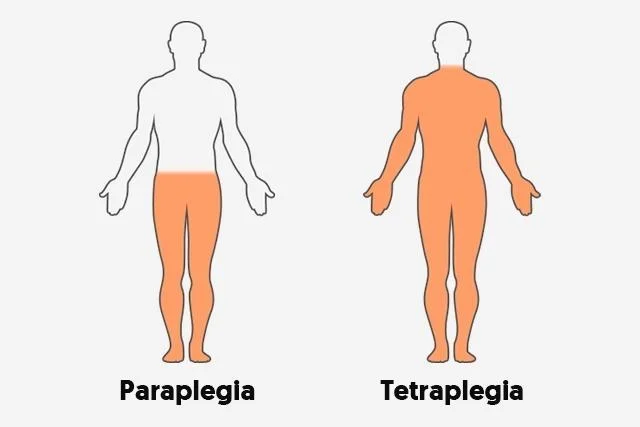

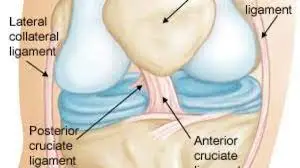
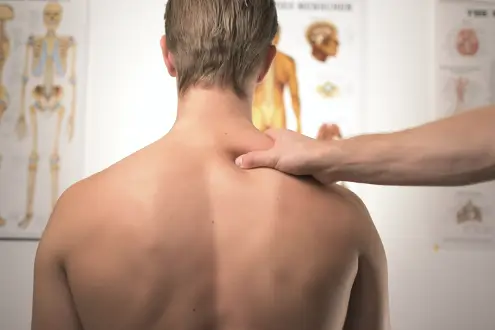
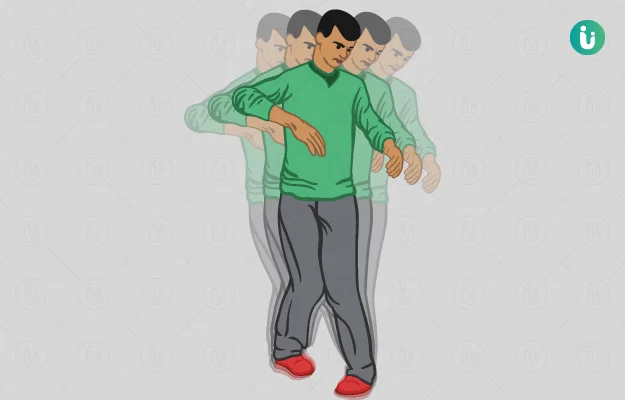
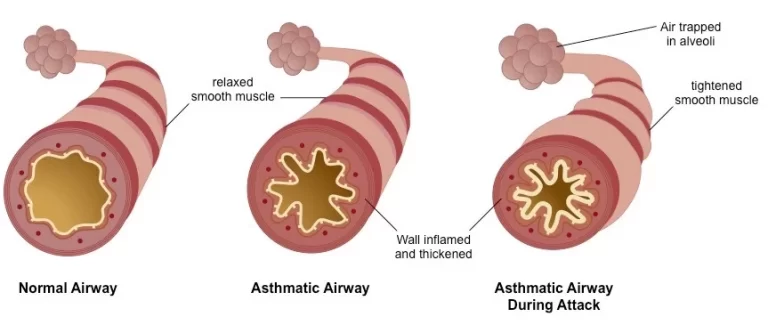
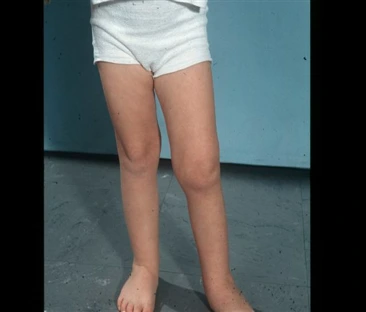
One Comment